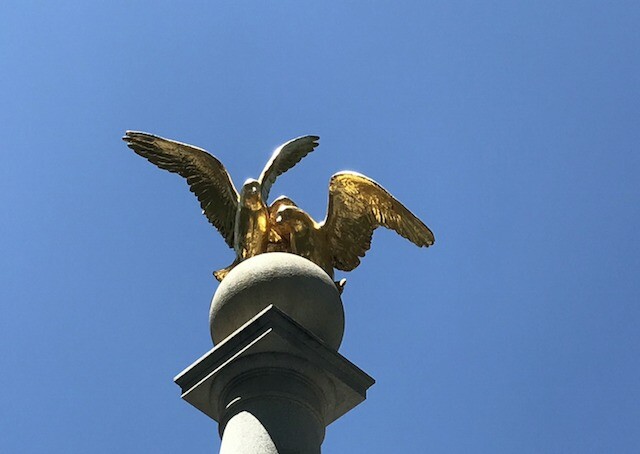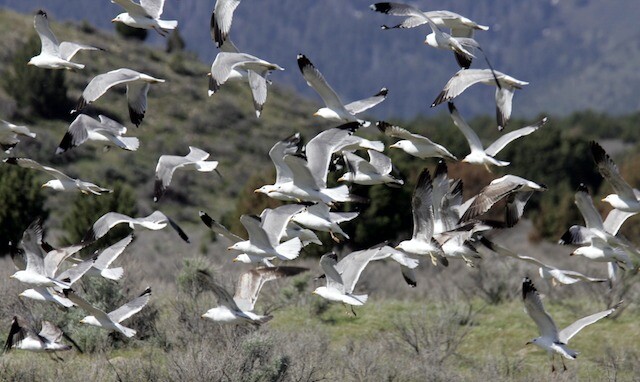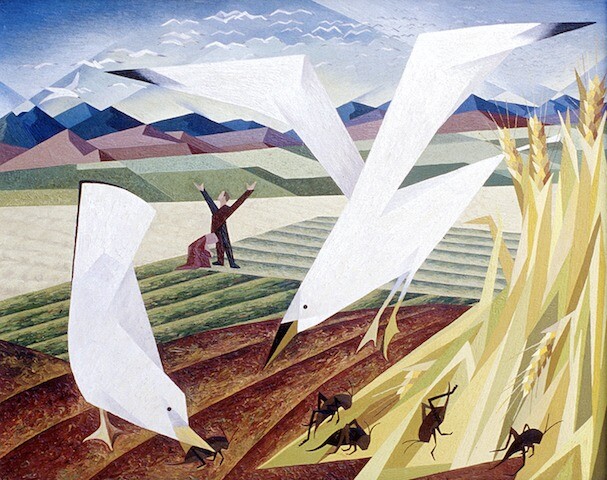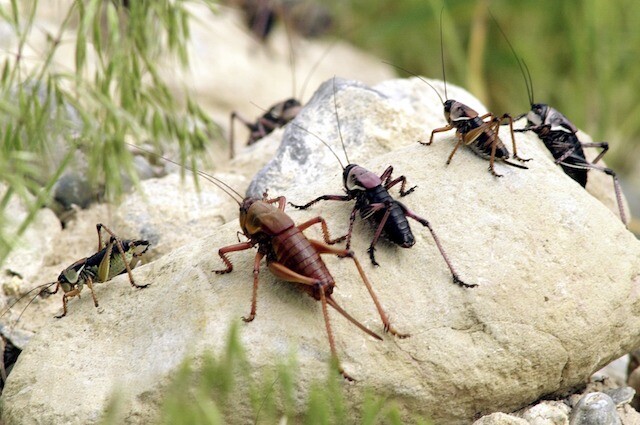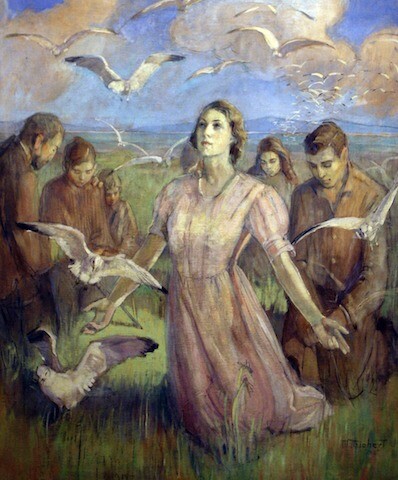Visitors walking near the Assembly Hall at Temple Square will likely see the golden statue featuring two seagulls, wings spread and perched atop a granite column standing 30 feet tall.
The monument, sculpted by Mahonri M. Young, was dedicated by President Joseph F. Smith in 1913. It carries the inscription: "Erected in grateful remembrance of the mercy of God to the Mormon pioneers."
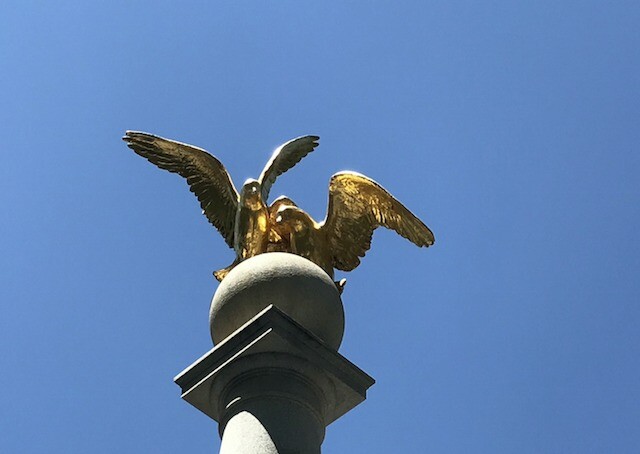
The Seagull Monument was erected on Temple Square in 1913. It is the work of Mahonri M. Young, a grandson of Brigham Young ( From Trent Toone).
The statue memorialized the well-known 1848 tale of the white seagulls gobbling down vast swarms of black crickets to save the Mormon pioneers from starving their second year in the Salt Lake Valley. Latter-day Saints and their descendants came to view these events as divine intervention. In 1955, the California gull was named Utah's state bird. Many artists have also re-created the faith-promoting story in paintings.
"The seagulls lifted the spirits of the pioneers and preserved the remnant of their crops during a scanty period," wrote John Hart, a former editor for the LDS Church News. "Their timely rescue of the pioneers' crops continues to be a source of inspiration and encouragement for those of the present as it was for pioneers of the past."
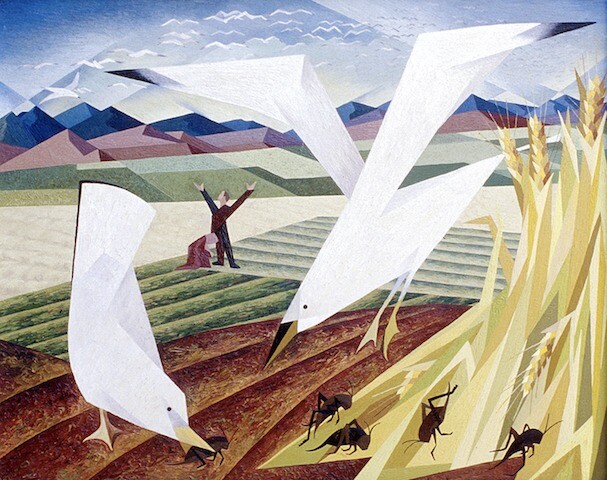
"Miracle of the Gulls" (oil on panel, 24 by 30, circa 1950) by Jessie Cowley Larson (1912- ) at the Brigham City Museum-Gallery through March 29. Courtesy of the museum. (Deseret News Archives)
While the "Miracle of the Gulls" still fuels faith 170 years later, LDS historians like Steven Harper, the late William Hartley and Casey Griffiths, an associate professor of Church history at BYU, have sought to clarify certain aspects of the story that have been over-dramatized.
"Like numerous other popular accounts of important and unusual historical events, the details of the Cricket War of 1848 over the years have been oversimplified, improved upon, and given somewhat legendary characteristics," Hartley wrote. "The fact remains, nonetheless, that the 1848 Mormon pioneers would have suffered more than they did had not the gulls come to their aid. Physically, the gulls helped avert a complete agricultural disaster. . . . The 'Miracle of the Gulls' story remains appropriate as an expression of faith held by Mormon pioneers and their descendants."
Three obstacles
The year 1848 was the Saints' second in the Salt Lake Valley and their first real chance at a full harvest. Following a mild winter, they optimistically planted a few thousand acres of crops in the spring.
Double trouble arrived in late May, including deadly frost by night and insatiable hordes of crickets by day.
"The first thing that happens is they get a hard freeze," Harper said. "Frankly, that is probably the biggest problem."
Mrs. Lorenzo Dow Young wrote: "We have grappled with the frost. . . but today to our utter astonishment, the crickets came by millions, sweeping everything before them. They first attacked a patch of beans for us and in twenty minutes there was not a vestige of them to be seen. They next sweep over peas, then came into our garden; took everything clean. We went out with brush and undertook to drive them, but they were too strong for us."
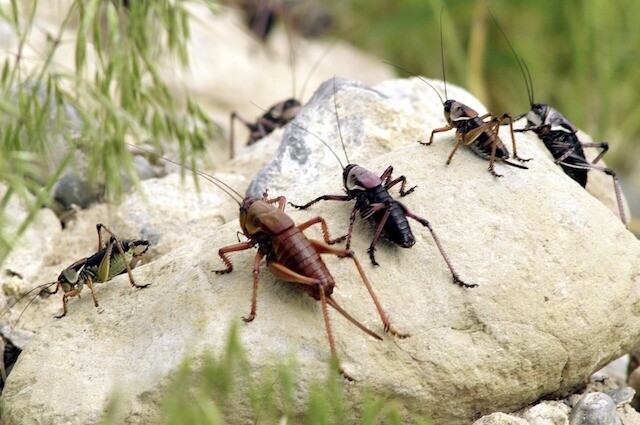
Mormon crickets. (Jeffrey D. Allred/Deseret News)
Eliza R. Snow recorded: "This morning's frost in unison with the ravages of the crickets for a few days past produces many sighs, and occasionally some long faces."
Lack of moisture also brought discouragement, according to Isaac Haight.
"Quite cold and very dry. Crops begin to suffer for want of rain," Haight wrote. "The crickets destroyed some crops and are eating the heads off the grain as soon as it heads out. The prospects for grain are discouraging."
Killing crickets
Hartley, a scholar, historian and author who spent many years with the Church History Department before he died in April, wrote about the "Miracle of the Gulls" in an article titled "Mormons, Crickets, and Gulls: A New Look at an Old Story" for the Utah Historical Quarterly in July 1970. His report shows the Saints tried various tactics for killing the crickets.
When sticks, brooms, and clubs didn't keep the black creatures away, the weary pioneers attempted to drown the crickets. They tried to drive them into a fire. They went into the fields with bells and tin pans to scare them with noise. A 5-year-old girl was given a wooden mallet to smash crickets. A pair of brothers tried pulling a rope across the top of the crops to knock the crickets off. Ultimately, they "prayed and fought and fought and prayed," Hartley wrote.
Air attack
The gulls came to the rescue around June 9. A pioneer named John Smith wrote that the birds appeared every day for about three weeks.
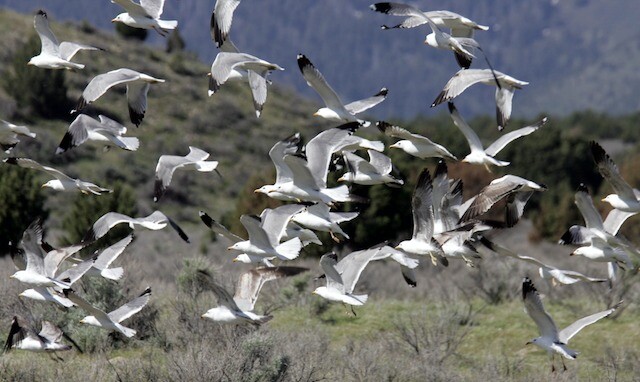
A flock of seagulls in a cricket infested area outside of Grantville, Utah May 6, 2004. (Tom Smart/Deseret News)
"There must have been thousands of them. Their coming was like a great cloud," Smith wrote. "When they passed between us and the sun, a shadow covered the field. I could see gulls settling for more than a mile around us."
The pioneers marveled to find lumps of vomited crickets as the gulls gorged themselves to capacity, drank water, regurgitated and continued to feed, Hartley wrote.
The legend grows
Less than five months later, the story began to reach epic proportions.
Henry Bigler, a member of the Mormon Battalion, had just come from California to the Salt Lake Valley when he heard the news. On Sept. 28, 1848, he wrote of the Cricket War:
"The whole face of the earth I am told was literally covered with large black crickets that seemed to the farmers that they would eat up and completely destroy their entire crops had it not been for the gulls that came in large flocks and devoured the crickets. I am told that the gulls would feast themselves on the crickets to the full and straight way disgorge them and begin again and thus they did destroy the crickets and save the crops and. . . all looked upon the gulls as a God send, indeed, all acknowledged the hand of the Lord was in it, that He had sent the white gulls by scores of thousands to save their crops."
The Saints continued to battle with crickets and grasshoppers in the years that followed, with the seagulls returning to feast, Hartley wrote.

Randy Schmitt of Riverton does his best to Disk his field while being swarmed by Seagulls eating worms, Saturday, April 25, 1998. (Scott G. Winterton/Deseret News)
The first recorded reference to a miracle came in general conference in September 1853 by apostle Orson Hyde, who said "the gulls had been agents prepared by the hand of providence," Hartley wrote.
Re-evaluation
To Hartley's surprise, however, those who describe the crickets invasion in their journals, diaries and life histories don't mention the gulls, Hartley wrote.
"It must not be overlooked that this official summary of Valley experiences from the first arrival of the pioneers until 1849 nowhere mentions the gulls, despite prominent notice paid the cricket plague!" Hartley wrote. "According to this evaluation, the crop losses were severe. Therefore, the actual physical benefit brought by the gulls could not have been as extensive as is popularly believed."
Hartley summarized his research with other clarifying points, including:
· Frost, crickets and drought all contributed serious crop damage in 1848. The gulls, natural enemies of the crickets and other insects, only helped with the crickets.
· The gulls were not strangers to Utah and they habitually regurgitate.
· The event was not clearly recognized by the LDS faith's First Presidency, its England newspaper, The Millennial Star, or those who wrote about the cricket infestation.
The older a story gets, the more sensational it becomes, Harper said.
"This is just how stories happen in a folk culture, especially miracle stories," Harper said. "There's nothing really unusual about the story. Having said that, I don't mean to imply there's nothing providential about the story."
The primary evidence from the time indicates the seagulls appeared, but their intervention was not as dramatic as it may have initially appeared. This does not invalidate the story, Griffiths said.
"The gulls did appear, on a smaller scale than we sometimes envision, and that was a miracle to many of the early pioneers. I am not ready to tear down the Seagull Monument on Temple Square because the gulls are only a symbol of the greater miracle that the pioneers were able to survive in the valley at all, given the conditions they lived in," Griffiths said in an email to the Deseret News. "The modern lesson might be constantly scanning the horizon for a flock of gulls when help might be before us in a smaller, more simple way."
Finding truth
A look back at what realistically happened can help readers to better appreciate historic events that express hope and faith. It's a message Elder Quentin L. Cook, a member of the Quorum of Twelve Apostles, recently shared with students in a BYU-Idaho devotional.
"Some people have even purposely misrepresented stories of our past to sow doubt. We can instead plant faith by studying more about church history," Elder Cook said. "In learning more, we will bind our hearts together with the Saints of yesterday and today. We will find examples of imperfect people who went forward with faith and allowed God to work through them to accomplish his work. In doing so, we will see better how he can work through imperfect people like you and me."
Elder Cook's counsel can relate to the "Miracle of the Gulls." Looking at the story from the pioneers' perspective—with frost and an infestation of crickets threatening their food source—made them desperate, Harper said.
"All of that is true and a real cause for concern. History is almost always much more complicated than the clean stories that we repeat to each other," Harper said. "As a historian, I’m interested in how the Saints at the time understood it. "What did it mean to them there and then? There are letters and journal entries that show that they thought it was providential. They thought the Lord intervened and sort of turned the tide."
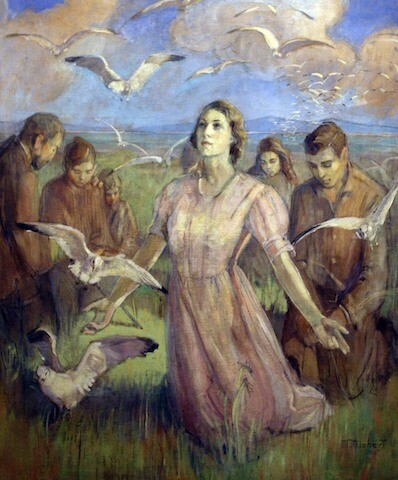
Minerva Teichert's "Miracle of the Gulls." (LDS Church)
Harper and Griffiths offered these tips when studying events in Church history.
Realize there is more than one way to view a historic event, Harper said.
"It’s dangerous to assume that there’s only one way to see it because eventually someone will show you that there’s another way to see it, and if you’re not prepared to see things from a variety of perspectives, you’ll be upset," Harper said.
There is value in doing the work necessary to find and study from firsthand accounts and primary sources. Multiple witnesses are even better.
"Everyone knows that establishing an account by 'the mouth of two or three witnesses' usually yields a more accurate version of the story. Different perspectives help us discern truth, because even a direct participant may make mistakes," Griffiths said. "At the same time, we need to be careful with the sources we use."
Remember that tracking down accurate history is hard work, Griffiths said.
"But there is a power that comes from having done the work to know that what you hold sacred really is true. We tend to seek for the path of least resistance when it comes to our learning. . . . A little study, thought and hard work can make our experiences with sacred places and events much more rewarding and more conductive to the Spirit because we are showing our devotion to the truth by really, truly seeking after it."
Griffiths continued: "If truth is our goal, then we have nothing to fear. Some events in Church history can be difficult to deal with at first, but it is worth it for us to do the work to understand and contextualize the events in the right way. I love the complexity of Church history."
Lead image Minerva Teichert's "Miracle of the Gulls." (LDS Church)
